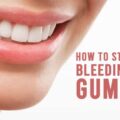Tooth Enamel Loss: Causes, Signs, Treatment, and Prevention
Table of Contents
Tooth Enamel Loss: What Is It?
The enamel makes up the outer layer of your tooth, and it protects your tooth from different kinds of damage. It’s the hardest tissue in the human body, making it extremely tough to damage. But, keeping the teeth safe from all sorts of chemicals can wear the tooth enamel out, making it prone to enamel erosion, which causes tooth enamel loss.
But you can elevate tooth enamel protection and keep the enamel safe from wear and tear. Dental veneers are the best way to do that. So, if you’re interested in getting veneers, press this link, and visit us in Griffith, Illinois.
Without further ado, let’s get into the nitty-gritty of tooth enamel causes.
Teeth Enamel Loss Causes
Tooth enamel is an unusually tough material, so what causes it to erode? Well, there are quite a few things behind teeth enamel loss, so let’s go over them.
Bad Oral Hygiene
Poor oral hygiene can be detrimental not just to tooth enamel but to oral hygiene in general. After all, the human mouth houses many different bacteria, some of which can be harmful. Without proper oral hygiene, these bacteria remain in your mouth and feast on the carbohydrates stuck there.
But, it doesn’t end there. As the bacteria feed on carbohydrates, they produce an acid that can damage your teeth. When mixed with saliva, these acids become plaque, which becomes home to millions of bacteria ready to attack your tooth enamel.
As this goes on, your enamel will grow weaker and weaker. The worst thing is that plaque can form on teeth very quickly, so brushing and flossing several times a day is vital to keeping up your oral hygiene and protecting your enamel.
Citric Acid
It’s important to get that vitamin C. However, citric acids can be harmful to your tooth enamel. Orange and apple juice contain many citric acids, and so do sodas. That doesn’t mean you should say no to fruit juices, it only means you shouldn’t go overboard with them.
Too Much Sugar
We all know sweets are bad for your teeth, but having a bit of a sweet tooth isn’t necessarily bad. However, eating sweets too often and in large amounts can be a death sentence for your tooth enamel. Think back to the carbohydrates we mentioned earlier. They’re mostly made up of sugar. And, the bacteria in your mouth love sugar, which means a lot of acid and plaque and a whole lot of trouble for your teeth. So, try saying no to sugary treats.
Alcohol
Fruit juices and sugar aren’t the only treats that are harmful to your teeth. Alcoholic drinks contain a lot of acids, and that reduces saliva. And without saliva, your mouth will become a home to various types of bacteria, which will heighten the risk of tooth decay and enamel loss.
Bruxism
Teeth grinding (bruxism) is a problem affecting many people. It usually happens when you’re asleep, although some people grind their teeth when they’re awake too. Teeth grinding puts a lot of stress on the teeth, such as cracks and breaks. Understandably, this can damage the tooth enamel.
Acid Reflux
Acid reflux disease is a common condition that involves the acids of your stomach reaching your mouth. As is the case with other types of acids, stomach acids are also the enemy of your tooth enamel.
Signs of Tooth Enamel Loss
Like with any other tooth-related problem, it’s important to catch the signs of tooth enamel loss in time. So, be on the lookout for the following signs:
- Discoloration
- Sensitivity to temperature
- Painful sensitivity
- Cracks
- indentations
- Smooth and shiny surfaces
How to Prevent Tooth Enamel Loss
Luckily, there are ways you can prevent your tooth enamel from eroding. Many of these ways are simply things you can incorporate into your daily routine. So, here are the things you can do.
- Minimize your intake of highly acidic beverages and foods
- Use a straw when drinking acidic beverages
- Eat a piece of cheese or drink some milk at the end of your meal — it helps cancel out the acids
- Be mindful of snacks
- Drink a lot of water throughout your day
- Chew sugar-free gum
- Use fluoride toothpaste and a soft toothbrush
- Ask your dentist about sealants
Treatments for Tooth Enamel Loss
Another good thing is that there are treatments for tooth enamel loss. Depending on the condition and the extent of erosion, your dentist will suggest different treatment options. The most common ones include:
- Crowns
- Fillings
- Dental bonding
- Teeth Veneers
Other options for more severe cases include a root canal or an extraction. If your dentist suggests a root canal, they will also recommend a dental crown. Now, let’s discuss the options more thoroughly.
Dental Crowns
Dental Crowns are made to fit over your entire tooth, and they often require modifications to your tooth. So, they’re rarely recommended as a standalone treatment for tooth enamel loss. Instead, as we’ve mentioned earlier, they come in a package with a root canal procedure.
Dental Fillings
Another way to make up for lost tooth enamel is with dental fillings. They can match your tooth enamel in texture and color and keep the decay from spreading.
Dental Bonding
Dental bonding includes the process of bonding composite resin to your tooth enamel. While other kinds of dental materials often require adhesive, dental bonding simply requires composite resin, forming a secure bond with the enamel. Because of that, it’s a great way to treat tooth enamel loss, requiring no modification to the original tooth. Composite resin can also work in favor of cosmetics since it can be customized color-wise and make the teeth appear whiter.
Dental Veneers
Dental or porcelain veneers adhere to the front side of your teeth and are one of the most popular procedures in the world of cosmetic dentistry. They’re used for treating many different things, among which is tooth enamel loss. They essentially serve as enamel if it has eroded since they work as a shield against all types of elements.
Veneers can also be customized in color to match your natural teeth or even be whiter if you want them to be. It usually takes two dentist appointments to get your dental veneers. The first appointment involves removing a very thin layer of tooth enamel and then taking dental impressions. The second appointment involves having the veneers checked and put in place.
Recommended Articles:








